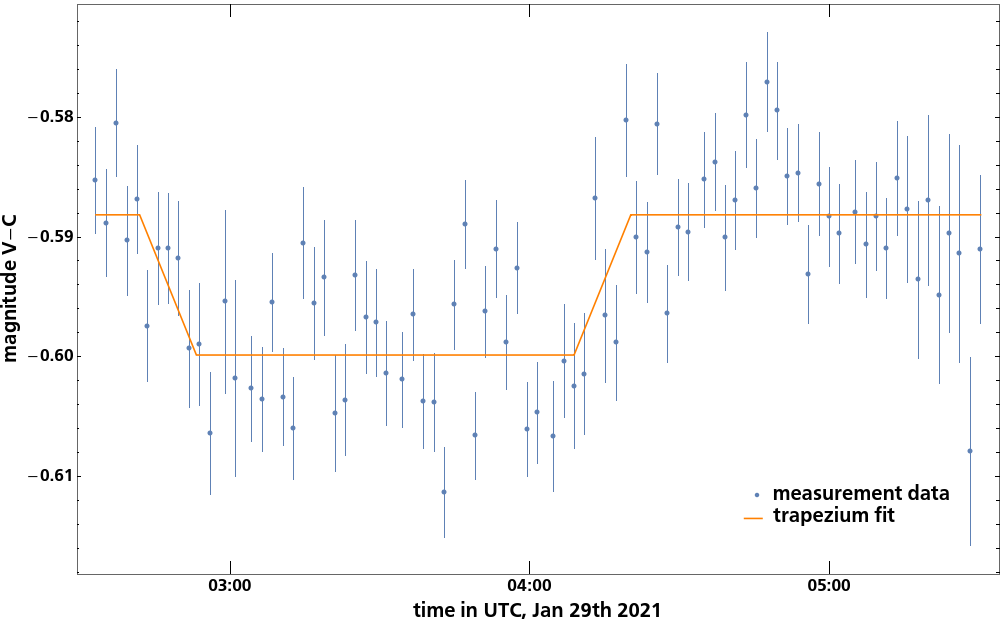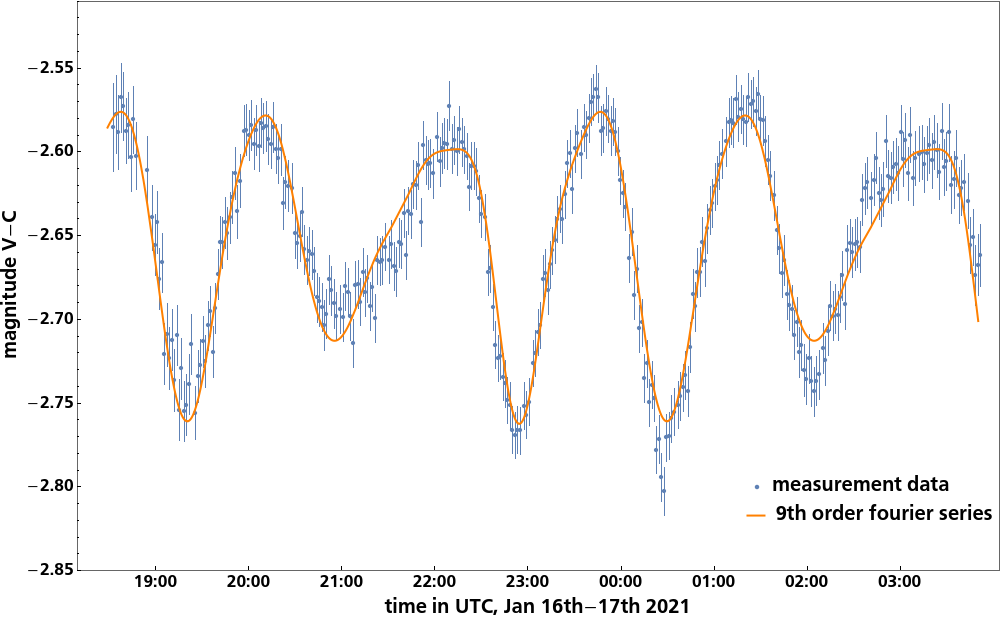
Marietta Coelle and Yannik Atzbach
We planned our observation under very unfavourable conditions: Not only we had to deal with full moon and decided to observe an exoplanet transit, which restricts the possible observations to a few time windows, but also the hourly changing weather forecast predicted heavy clouds and dense fog, leaving only the night of January 28th-29th for observation. However, the transit of KPS-1 b in the constellation Ursa Major fulfilled all requirements and we could save enough data, shown in the first figure, before the observation was interrupted by bad weather.
We measured a transit duration of (1:38±0:04)h and a transit depth of (0.0117±0.58)mag which can be used to calculate the ratio of the radii of planet and star giving a value of (0.108±0.011). We measured the center of transit to be at 3:31 UTC, while the “Exoplanet Transit Database” predicted it at 4:02 UTC. This discrepancy could come from uncertainties of earlier measurements for the center of transit and could be verified by another observation.

The light curve of the pulsating variable V0803 Aur shown in the second figure was fitted with a 9th order fourier series. Interestingly, the amplitudes of the 3rd order sine as well as the 3rd and 4th order cosine components are one order of magnitude bigger than the others. We found the period length of the 3rd harmonic to be (0.0716±0.0001)d which is only 0.8% longer than the literature value.
In the data of V0803 Aur four more variables could be found which do not have an entry in the “SIMBAD data base”. However, the analysis of the light curves was difficult due to strong dependency of the period length on the start parameters of the fit and on the fourier order.
Observing the light curve on two consecutive days could allow to determine the period length more precisely.

